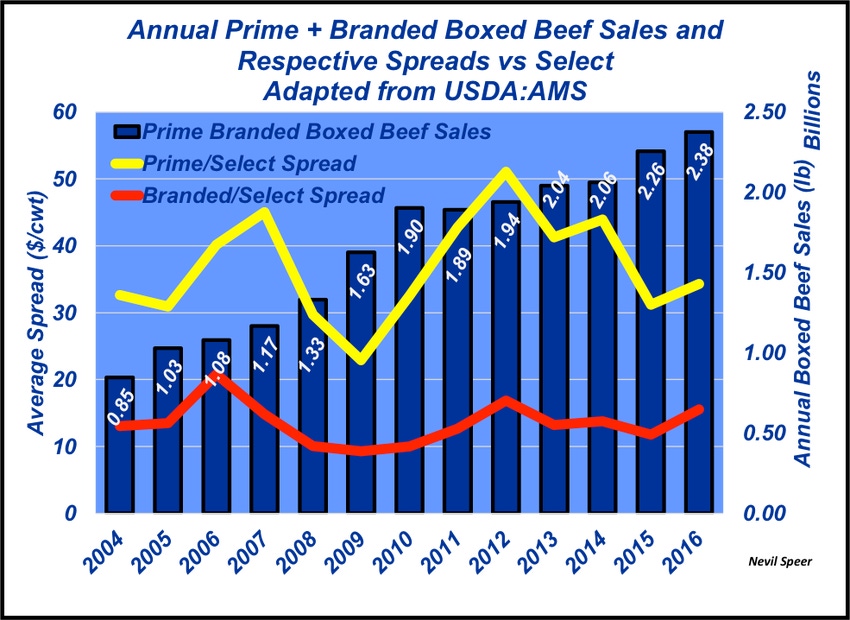Prime, branded beef: More product, steady premiums
High-quality beef, thumbing its nose at conventional economic wisdom, continues to keep consumers coming back to the meat case.
May 2, 2017

Scarcity is a fundamental economic concept that ultimately dictates the function of price for any given product or service. In general, as something becomes more scarce, price will correspondingly increase, regardless of whether the underlying cause is related to supply or demand. Conversely, declining scarcity (more abundance) generally causes the price of a service or good to also decline.
Therefore, in an environment in which demand remains steady, if supply of a specific good increases, the relative price should decline. With that in mind, let’s apply the principle to the beef industry. During the past several weeks, this column has focused on the implications of an improving quality grade trend over time.
This week’s illustration highlights the steady supply increase of Prime and branded beef product in the marketplace during the past 13 years. During that time, availability of high-quality beef has tripled – the industry annually producing nearly 1.6 billion pounds more in the Prime and branded categories versus 2004.
Hence, that product has become less scarce and should be worth relatively less over time – at least, that’s the basic economic premise. But demand for high-quality beef has kept up with supply. That’s evidenced by the fact that price spreads for Prime and branded product have remained relatively flat – the spreads haven’t changed over time despite being pressured by more product availability.

Clearly, demand is the differentiator. It’s a great example of the importance of decommoditizing the beef segment. Consumers like purchasing beef at the high end of the market – it tastes better and is more consistent. This is a key driver toward building sustainable demand and establishing pricing power in the marketplace.
How do you envision the top end of the beef market progressing in the years to come? Is this a trend that will likely continue, or find some resistance in the near future? What have you done within your production systems that have helped contribute to this trend of more Prime and branded product? What changes might you make to take advantage of these spreads? Leave your thoughts in the comments section below?
Nevil Speer is based in Bowling Green, Ky., and serves as vice president of U.S. operations for AgriClear, Inc. – a wholly-owned subsidiary of TMX Group Limited. The views and opinions of the author expressed herein do not necessarily state or reflect those of the TMX Group Limited and Natural Gas Exchange Inc.
About the Author(s)
You May Also Like




.png?width=300&auto=webp&quality=80&disable=upscale)
